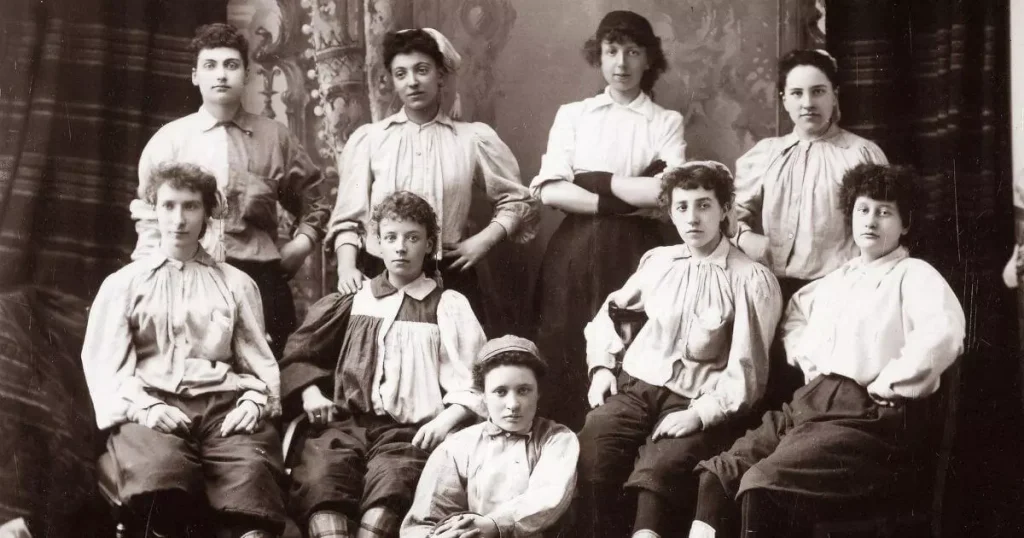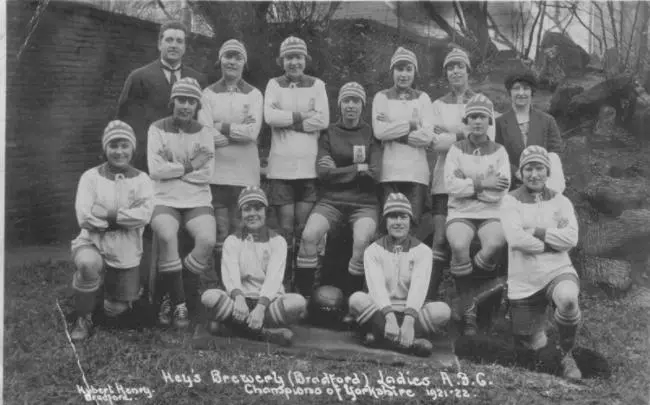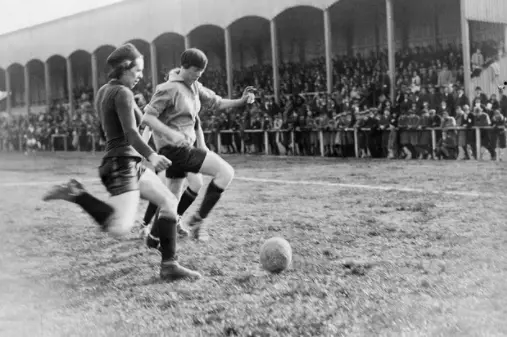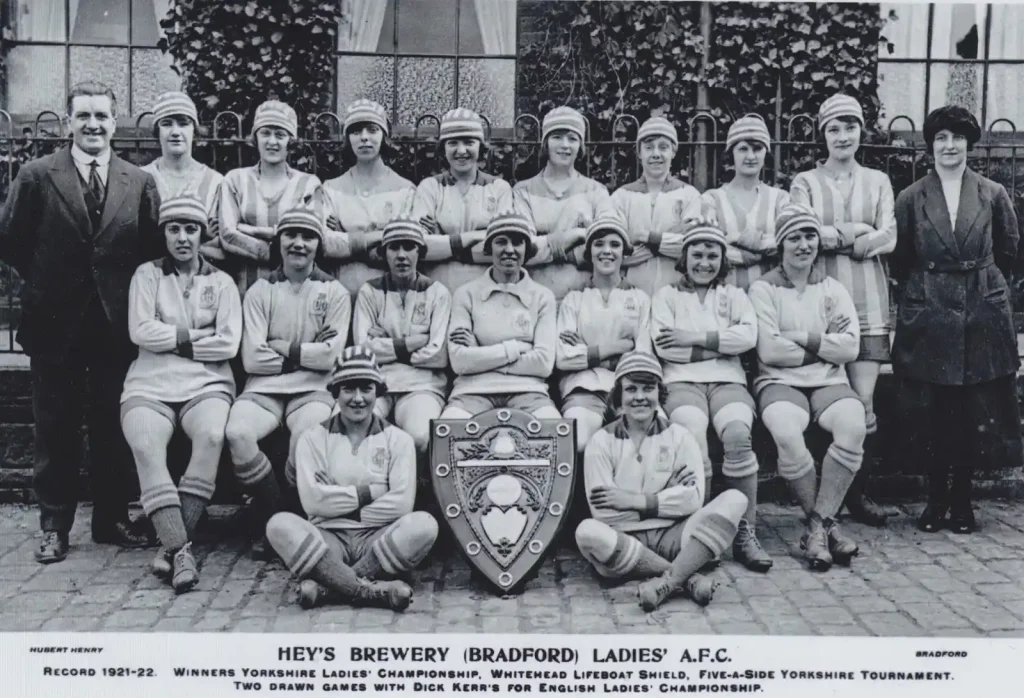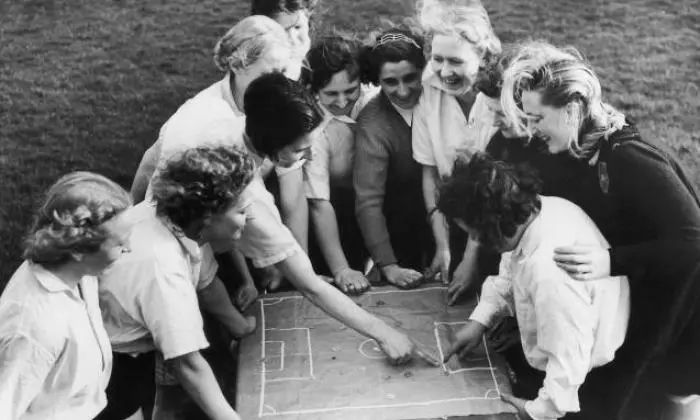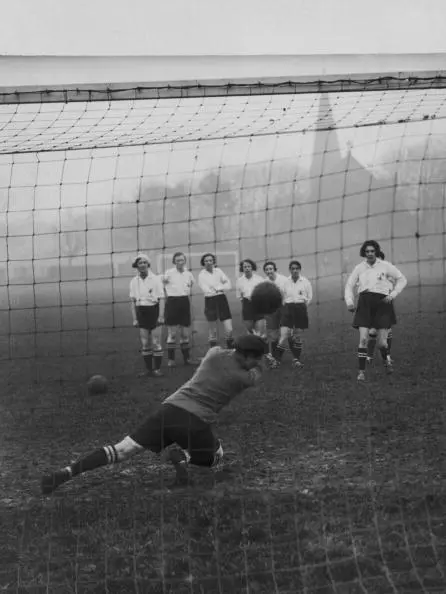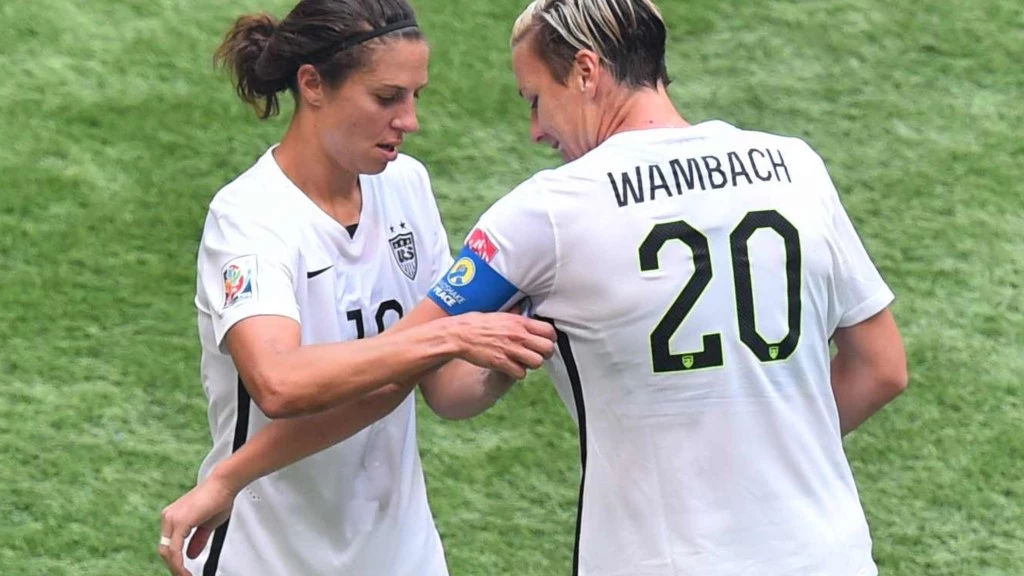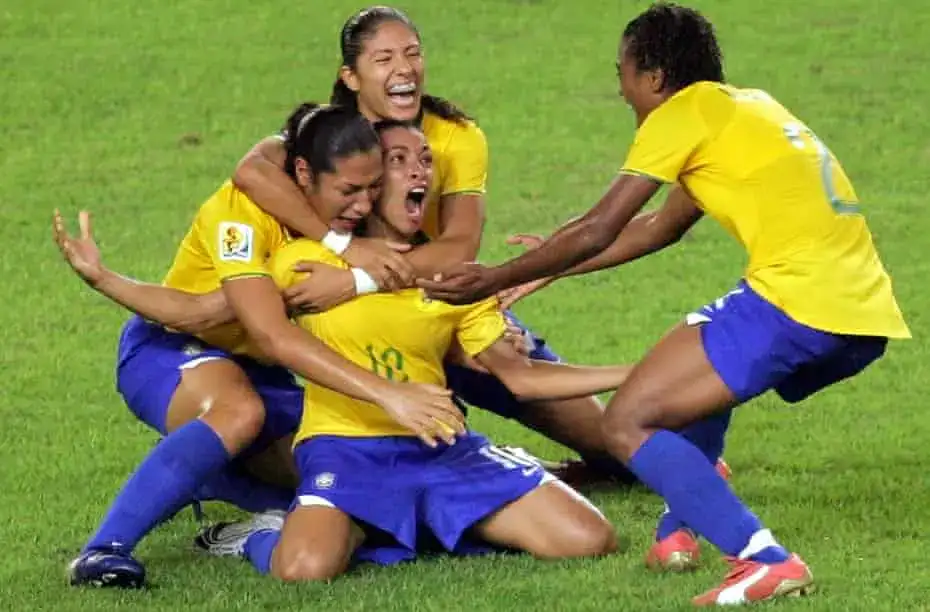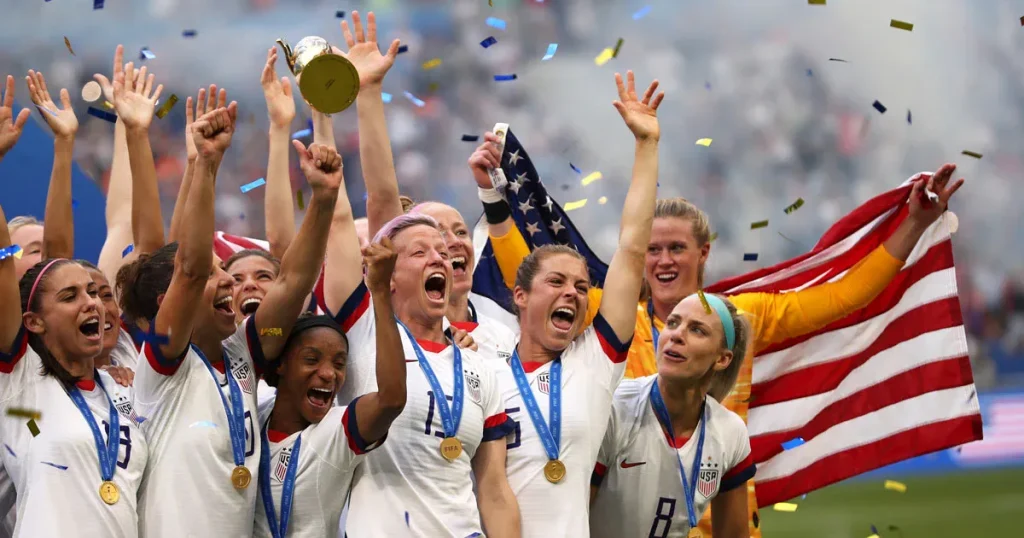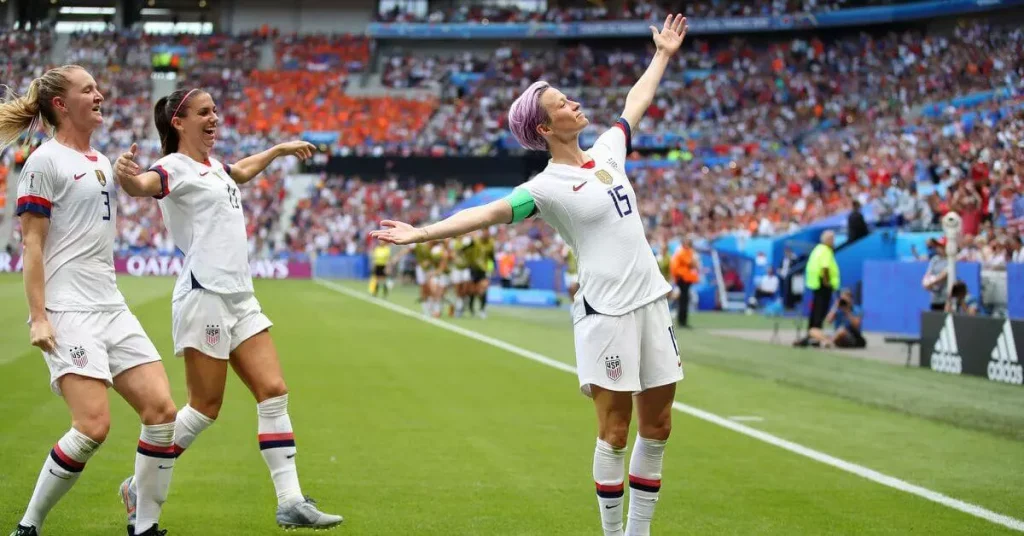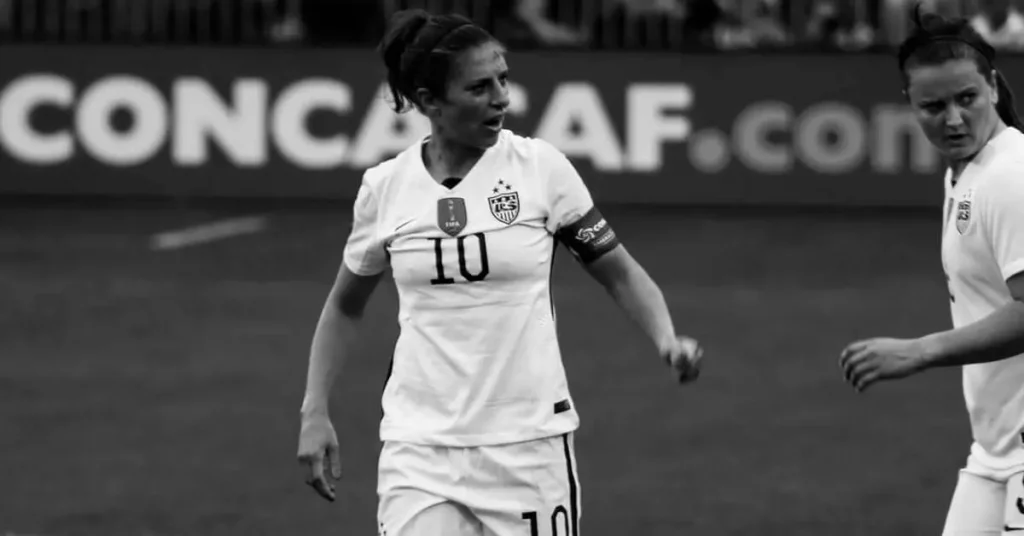On a chilly March afternoon in 1895, a historic event occurred in Crouch End, London. A group of female footballers gathered to play a football match, divided into teams representing North and South England. The organizer of this groundbreaking event was Nettie Honeyball, who would later become the inaugural secretary of the English Ladies Football Team.
The match ended with a 7-1 victory for the North, and an impressive crowd of 10,000 spectators witnessed the game. For some, the match was simply a novel spectacle, but for others, it was a demonstration of the capabilities and determination of women in sports. The game sparked mixed reactions, but ultimately, it sparked growth in popularity and acceptance of women’s football. [9]
Women’s Football In Yorkshire
Soccer matches were organized in the North and Midlands throughout 1895. However, the first-ever football match at Bradford City’s ground (Valley Parade) was played on 5 May 1895. It was an exhibition organized by the Bradford Ladies Football Club between the Reds and the Blues in front of around 1,600 spectators. This was four years before the formation of the Bradford and District Football Association and eight years before the birth of Bradford City.
The ‘experiment’ was short-lived as by the end of the century, interest was waning. The cause was not helped by the Council of the Football Association, which instructed its members in 1902 not to play matches against female footballers.
WW1 And The Female Footballer Revival
The outbreak of the First World War led to a surge in the formation of female football teams. As men were sent to the front lines, women took on more prominent roles in industry and agriculture. Many of these women worked in dangerous munition factories, which led to greater independence and bonding among them. This, in turn, led to the organization of team sports, particularly football. [7]
Throughout the country, but particularly in the North, women began forming football teams. The players came from a wide range of backgrounds. Mrs. Ada Beaumont, who played for the Huddersfield Ladies’ sports club, Atalanta, initially feared that the club would be composed of higher-class women.
However, these concerns were quickly dispelled as factory workers dominated the teams. Factories even provided pitches and facilities for the women’s teams, recognizing the benefits of keeping the women healthy and boosting morale in the workplace.
In September 1917, a match was held at Bradford Park Avenue’s ground between Thwaites Brothers Ltd, an ironworks in Thornton Road, and Phoenix Dynamo Manufacturing Ltd. These games were often charity matches organized to raise money for wounded service members and the families of those killed in action. [4]
Big Losses
The Bradford Pals had suffered significant losses, especially at the Battle of the Somme in 1916. Nine footballers who had played for Bradford City and two Park Avenue players were killed in the war.
Peter O’Rourke, who was the manager of the Bradford City winning team in 1911, was a great supporter of the women’s game. [1] Most Bradford works teams seem to have disbanded after the war, but the Manningham (or Lister’s) Ladies was formed in 1921. Most of the players had played for the mill’s hockey team. The mill owners financed the club, and subscriptions were deducted from the workers’ wages. [5]
There was public interest when Manningham was due to play Dick Kerr Ladies from Preston at Valley Parade. They were the most outstanding team of the period.
Dick Kerr Ladies
Dick Kerr’s was an engineering works which had switched over to making munitions. Like other women’s teams, they had raised substantial amounts of money for charity. Between 1917 and 1923, £70,000 went to veterans, hospitals, and poor children. [8]
In preparation for the match at Valley Parade, a practice match took place on the Manningham Mill’s playing fields. The local press became interested and came down to take photographs.
The Manningham team had a female footballer called Holden, described as “the Dickie Bond of the team.” Bond was one of the most popular players ever to play for Bradford City.
The captain was a Miss Derry who, along with a teammate, Bogg, had played for the Yorkshire and Lancashire team, which lost 7-0 to Dick Kerr Ladies the previous week at Leeds. The match was watched by 26,000 and raised £1,700 for the Railway Benevolent Association.
The fixture at Valley Parade took place on 13 April 1921, with Bradford City’s captain, George Robinson, refereeing, and other City players, Frank O’Rourke and Dickie Bond, running the lines. In front of a crowd of about 15,000, the Dick Kerr from Preston team won 6-0. £900 was raised and split between Bradford Hospitals and the Earl Haigh Fund for former service members. [6]
Hey’s Brewery Ladies
After the match, the female footballers dined together at the Great Northern Victoria Hotel then went to a show at the Alhambra Theatre. The Manningham Ladies team seems to have been disbanded shortly afterward, but it inspired another Bradford team, Hey’s Brewery Ladies on Lumb Lane.
The new women’s football club had links with Bradford City as members of the brewery’s board were also on the Bradford City board. They played Dick Kerr Ladies at Valley Parade on 19 October 1921 in aid of the Lifeboat Fund. Two linesmen were involved in the game: Bradford City’s goalkeeper and Scottish international Frank O’Rourke. [10] The score was 4-1 to Dick Kerr’s. The attendance was 4,070, and £184 was raised.
Yorkshire Championship
On December 26th, 1921, Hey’s Brewery Ladies defeated the previously unchallenged Doncaster Ladies in a match for the “championship of Yorkshire” by a score of five goals to none. [11]
Then, on January 7th, 1922, they met the formidable Dick Kerr Ladies team again at the Wakefield Trinity’s Belle Vue ground in aid of the Wakefield Workpeople’s Hospital Fund.
In front of around 5,000 spectators, the Dick Kerr Ladies quickly took the lead within the first ten minutes. It was a hard-fought match, but with only five minutes remaining, Hey’s Brewery Ladies’ center-forward E. Jackson delivered a stunning shot to tie the game. Despite this late surge, the Dick Kerr Ladies managed to maintain their unbeaten record.
To benefit the Manningham Soldiers Fund, a rematch was scheduled at the Greenfield Stadium athletics ground, where the Bradford Northern Rugby League Club had played from 1907-1908. However, heavy snowfall forced the match to be postponed until February 18th, 1922, when the teams ended in a 4-4 draw. [12]
Bradford Women’s Leagues
Hey’s Brewery Ladies were vast, becoming the female footballing stars of women’s soccer and taking the crown from Dick Kerr Ladies. Bradford was the first city to host the English Ladies Challenge Cup Final, held there in 1922. In 1920-21, there was a Bradford Ladies League with two divisions.
Division One consisted of College Ladies, Old Hansonians, Bradford, Odsal, Undercliffe, Grange, Tartan, Shipley, Frizinghall, and Saltaire. Division Two comprised Sion, Bowling, Cawthorne, Tetley St, Phone Exchange, St Aidan’s, YMCA, Westgate, CM and M Ladies, and Eastbrook.
While most teams in the Bradford League played nine or ten games, Dick Kerr Ladies played almost 60 games that season. There was also more than one cup competition, including the Hospital Tournament. In the North East, teams played in the Munitionettes Cup.
In 1918, Bolckow Vaughan from Middlesbrough was beaten by Blyth Spartans at Ayresome Park in front of a crowd of 22,000. At the heart of its popularity, questions were being asked whether it was a suitable game for female footballers to play. [2]
A Health Warning For Female Footballers
Some people believed that playing football could have detrimental effects on women’s health. Dr. Arabella Kenealy argued that the sport would harm the muscles in the shoulders, chest, and mammary glands, leading to “diseased and degenerate offspring” and a decline in the birth rate. [13]
However, Dr. Mary Lowry and Mrs. Barraclough, a female footballer and captain of Huddersfield Atalanta, disagreed, stating that the sport was no more harmful than a heavy day of washing and that it helped improve overall health.
Despite this, criticism of women’s soccer persisted, with many arguing that it was too dangerous and that injuries sustained on the field were proof that a woman’s place was in the home.
Despite this, female footballers continued to play in charity matches to support the miners and their families during the coal dispute of 1921, and crowds at these games continued to grow.
Bigger Crowds Than Men
In 1921, despite drawing larger crowds than many male professional teams, female footballers faced a significant setback. The Football Association (FA) had a negative stance on the sport, and rumors circulated about misappropriated charity funds, which were later found to be untrue.
Teams like the Hey’s Brewery Ladies team only charged for expenses for long journeys and provided compensation for lost wages and insurance for injuries. However, on December 5, 1921, the FA passed a resolution that requested its member clubs to refuse to allow their grounds to be used for female football matches due to complaints and concerns about the game and its supposed noncharitable uses.
The Ban On Female Footballers
The prohibition of female footballers from playing on Football League grounds persisted until May 1971.
The identity of those who lodged complaints remains unknown. Still, it is speculated that it was a male-led conspiracy, possibly driven by concerns about the growing independence and reluctance to conform to traditional gender roles among women in the post-war era.
The impact of the FA’s decision was devastating for the progress of women’s football, resulting in mass player desertion and the collapse of many clubs.
Notably, some teams, such as Bath, Dick Kerr Ladies, and Huddersfield Atalanta, survived as they had their own grounds. [3]
Around 150 Clubs
In the wake of the ban, a meeting was called in Blackburn within a week of the ban, where 25 clubs were represented and the English Ladies Football Association was established.
At the time of the ban, there were about 150 ladies’ football clubs in England, mainly located in the North and the Midlands. The demand for women’s matches declined the following year, with matches becoming less frequent and often being part of festivals.
However, some competitions continued to exist, particularly in the North of England. One such competition was the Bradford Charity Shield in 1922, which featured teams from Huddersfield, Keighley, Doncaster, and Hey’s Ladies from Bradford.
The final match was played at the Greenfield Stadium. Bradford and Hey’s defeated Doncaster 4-0. Despite this, the Yorkshire Rugby Union denied permission for Hey’s Ladies to play against a visiting French team at Lidget Green, Bradford, because the game was not suitable for women, and they made a ridiculous display when playing it. [14]
After winning the Whitehead Lifeboat Shield in May 1922, 4-0, Hey’s Brewery Ladies seem to have gone out of existence abruptly. It is unclear why, but perhaps the women didn’t want to play anymore.
In 1925 they appeared to have taken up cricket and played in the Bradford Ladies Evening Cricket League. Nonetheless, the City of Bradford made a significant contribution to the history of soccer.
Unfortunately, the game generally went into a state of ‘suspended animation’ before its popular revival from the late 1960s onwards.
Best Female Footballers Who Have Influenced History
Abby Wambach – Big-time player. Twenty-two of her 184 goals came in major tournaments. Olympic gold medalist who twice found the back of the net in the finals. Completed in four World Cups winning twice.
April Heinrichs – After a successful playing career, April switched to coaching and has led the US Women’s National Team to great success. Won a World Cup as captain and appointed Technical Director for women’s soccer.
Alex Scott – A former England national team player who now works as a match pundit. She has gained the respect of male professional football players for her opinion about the game.
Birgit Prinz – She led Germany to back-to-back World Cup titles in 2003 and 2007. She was named FIFA World Player of the Year three times. Over a decade at club level, Birgit won the Bundesliga league title eight times and three UEFA Cups.
Carli Lloyd – Played 316 times for the U.S. national team winning two World Cup medals during her 17-year career. Has the distinction of being the highest-paid female soccer player in history.
Chan Yuen Ting – The first female football coach, who guided a professional male team to the championship of Hong Kong’s premier football league.
Christine Sinclair – Is the world’s top scorer of international goals for both men and women. Has won the Canadian Soccer Player of the Year award 14 times. Has participated in five FIFA Women’s World Cups. Seven times shortlisted for FIFA Women’s World Player of the Year award.
Florence Hardouin – An integral part of the French national team in the 1980s and 1990s. She holds a high reputation in European soccer circles.
Kristine Lilly – A 23-year member of the USWNT who made 354 appearances. Three-time Olympian who has won two gold medal and played in five World Cups. Scored 130 goals internationally and is now a coach in the NWSL.
Lieke Martens – A Dutch footballer who made a significant impact on the women’s national team and FC Barcelona’s pursuit for a Champions League final victory.
Lily Parr – Between 1920 and 1951, she starred in Dick Kerr Ladies and was very open about her relationship with her partner. She became an icon for female sexuality.
Lucy Bronze – The first English player to win the UEFA Women’s Player of the Year award. She has won three consecutive UEFA Women’s Champions League medals and six league titles at the club level.
Marta Vieira de Silva – Is often acclaimed as the greatest female football player of all time. The Brazilian national team player has won six FIFA World Player of the Year awards. Has played in a World Cup final and one of the best strikers of all time.
Mia Hamm – A retired American soccer player, boasts an impressive resume, including two World Cup victories and two Olympic gold medals. She was a trailblazer in the sport, serving as the prominent figure in the introduction of the Women’s United Soccer Association. Her career began at a young age, as she made her debut for the US Women’s National Team at just 15 years old.
Megan Rapinoe – Is an advocate for gender and social equality, as well as equal pay. Known for her goal-scoring ability and productive play on the field, especially at the World Cup tournaments.
Nadine Angerer – She became the first goalkeeper (male or female) to win the FIFA World Player of the Year award after winning two World Cups. Now a women’s soccer coach in the USA.
Nettie Honeyball – She was the first female soccer player in the world and paved the way for women to play soccer.
Renate Lingor – Technically gifted and capable of taking well-placed free kicks, the 22-year veteran was a five-time national champion, twice UEFA Cup champion, twice World Cup champion, and twice bronze medalist at the Summer Olympics.
Sandi Gordon – The first black player to represent the US Women’s National Team in 1987. Gordon went on to represent the USWNT seven more times.
References:
[1], [2], [3], [13], and [14]: https://www.thetelegraphandargus.co.uk/news/20588253.womens-football-pioneers-bradford/
[4], [5], [6], [9], [10], [11], and [12]: https://yorkshirecoasthistory.wordpress.com/home/heys-ladies-of-bradford-the-forgotten-football-champions-of-yorkshire/
[7] and [8]: https://www.thetelegraphandargus.co.uk/news/19664349.look-back-origins-womens-football/
Images:
Public Domain (main image)
www.thetelegraphandargus.co.uk/news/19664349.look-back-origins-womens-football/
Getty Images
www.bradfordsporthistory.com/2018/09/24/21-october-2018/
www.talksport.com/football/255966/dick-kerrs-ladies-fc-remembering-greatest-womens-football-team-world-170714246436/
www.twitter.com/copa90/status/1334858102957600769?lang=zh-Hant
ftw.usatoday.com/2015/07/carli-lloyd-explains-why-she-needed-to-give-abby-wambach-the-captains-armband
Greg Baker / AP
